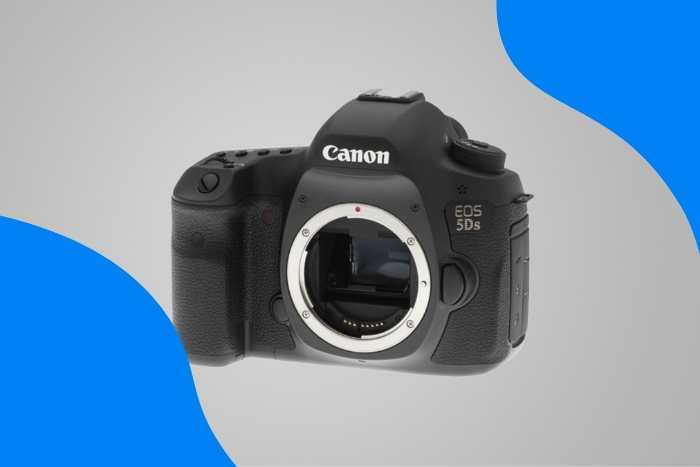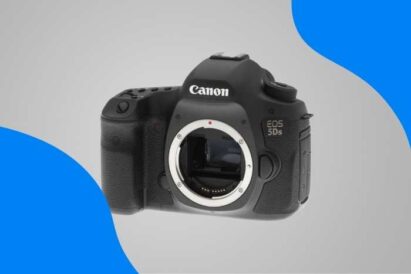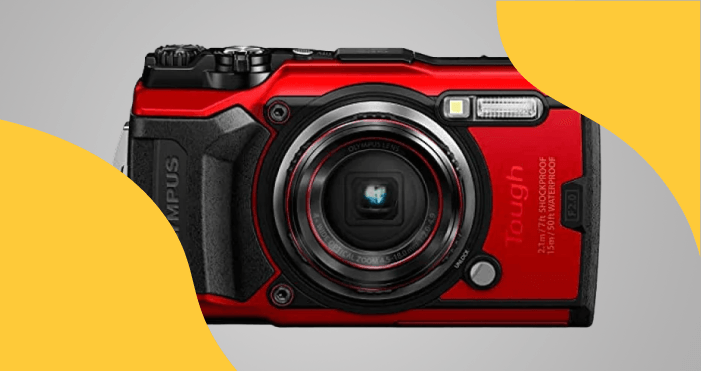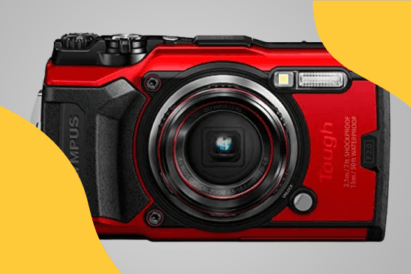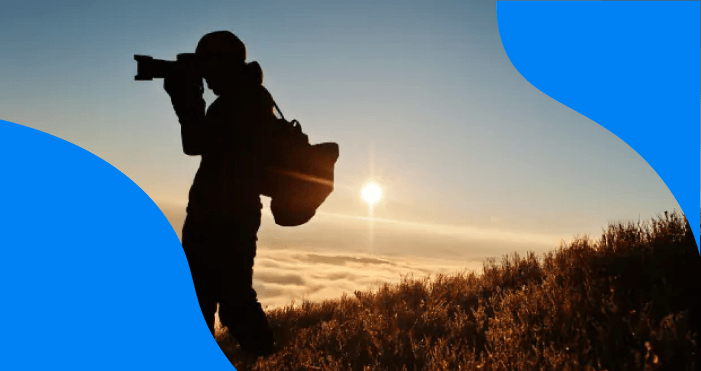Cameras with high dynamic range (HDR) handle a few situations for me as a wildlife photographer. I try to shoot as often as possible during Golden Hour, just after sunrise or before sunset. So that means low-light capability is important when choosing my camera gear. I also try to take a few backlit shots, meaning I must preserve detail in bright backgrounds.
High dynamic range is simply the number of stops of light the camera can record between pure black and pure white. The human eye can generally cope with around 20 stops (Exposure Value or EVs). But even the best camera on our list, the Sony a7R V, can only manage 15 stops. That’s not bad, but it still doesn’t beat what nature gave us!
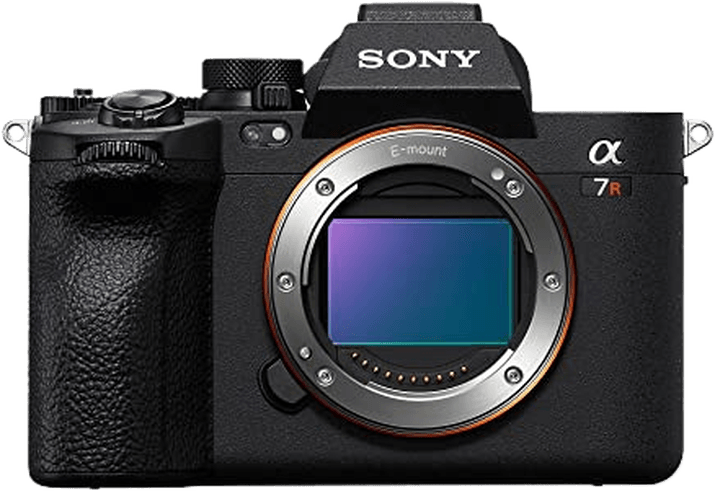
Sony a7R V
What Are the Best Cameras With High Dynamic Range?
The cameras on this list have the best dynamic range, scoring between 14.6 and 15 EVs. (A few older versions, like the Nikon D810 or the Sony a7R III, also do well. But I’ve excluded those for updated versions.)
Remember that a camera’s dynamic range is not the same as low-light sensitivity—it’s the range rather than the minimum. That means my new Sony a1 can beat my old Nikon D850 on low-light sensitivity (3163 vs 2660 ISO) but still have a lower dynamic range (14.5 vs 14.8 EV)!
Let’s quickly look at the top-ranked cameras for high dynamic range.

- High-resolution sensor
- Automatic bird or animal eye detection
- Autofocus can track cars, trains, airplanes, and insects
- Big, bright, clear, and sharp electronic viewfinder
- 3.2-inch tilt, flip LCD screen
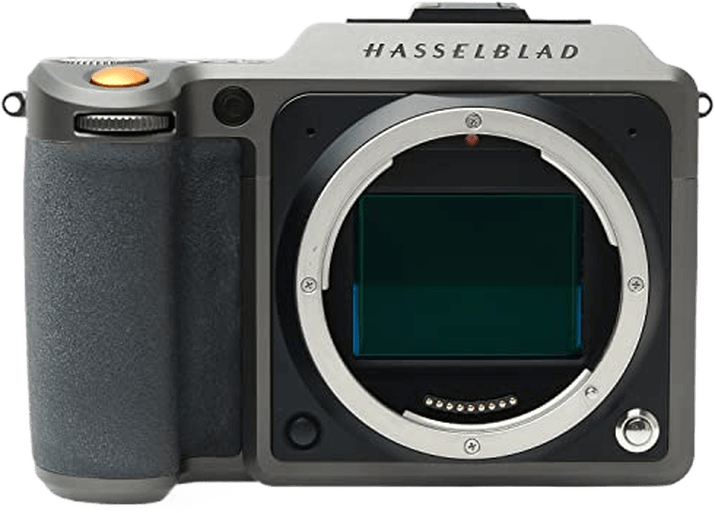
- 50 MP sensor gives you outstanding image quality
- Excellent 14-stop dynamic range
- 1/2000 s flash sync
- Very compact for a medium format
- Built-in Wi-Fi and GPS
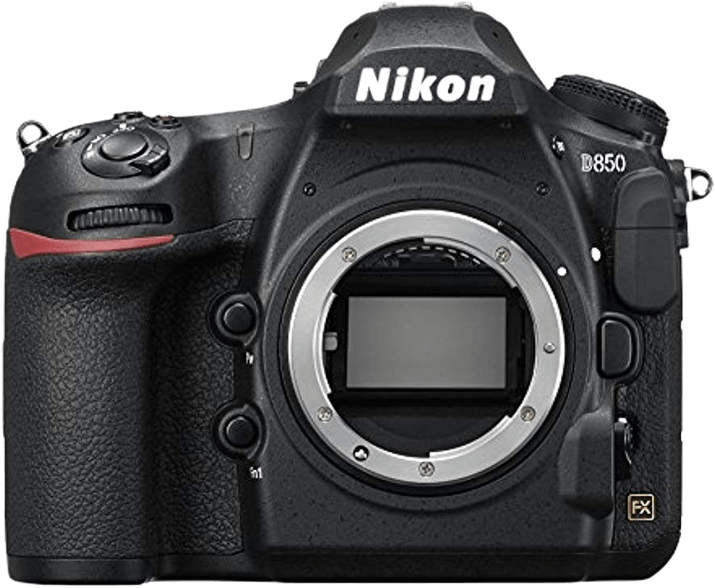
- Fantastic overall image quality
- Excellent 3D continuous AF tracking
- Long, 1,840-shot battery life
- Durable, weather-sealed construction
- Sharp 4K/30p Ultra HD video
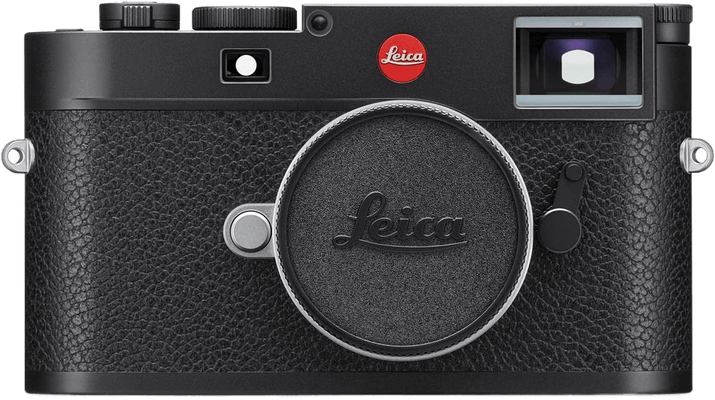
- High-resolution shooting options
- Low ISO setting of 64
- Three customizable buttons
- Good battery life
- Classic rangefinder camera body
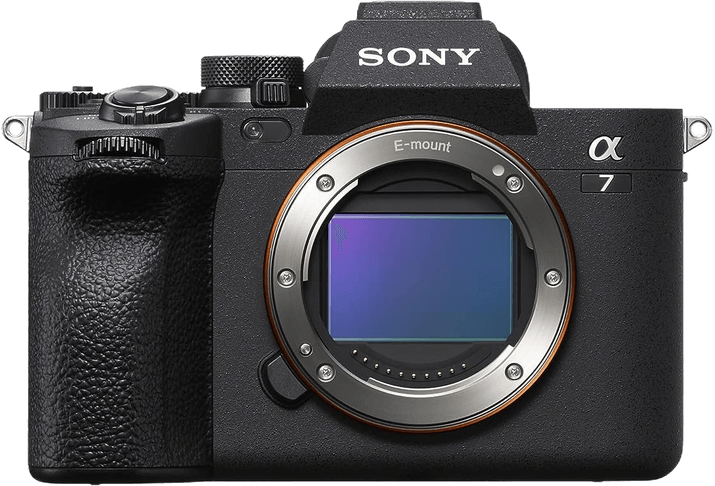
- Excellent image quality
- Super responsive autofocus
- 5.5 stops of image stabilization
- Fully articulating rear screen
- Powerful video capabilities (4K / 60p, 10-bit video) and live streaming
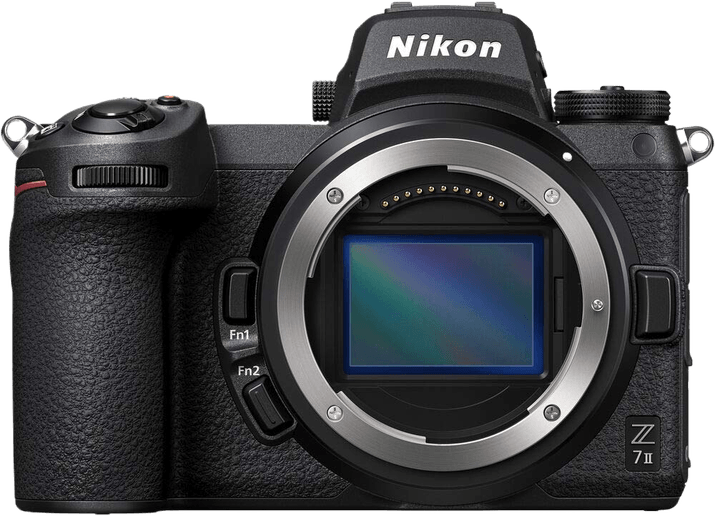
- High-resolution image sensor
- Rapid 1/8000 s shutter speed
- Excellent AF system
- Dual memory card slots
- Great 4K video at 60 fps
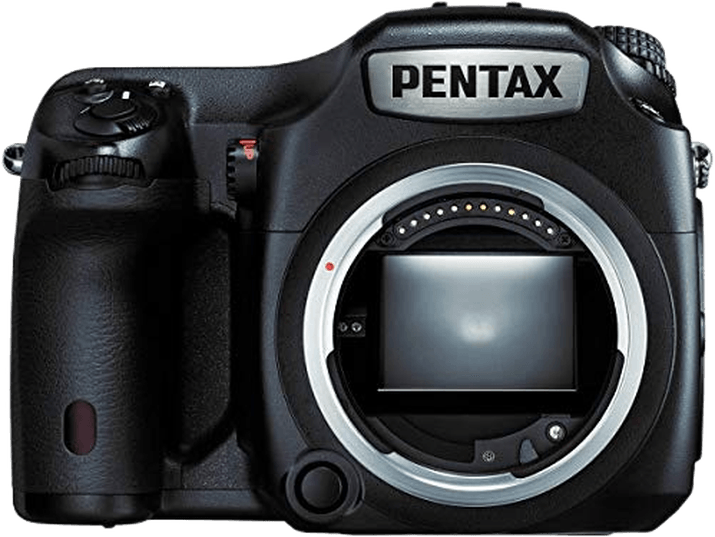
- Affordable for a medium format
- Incredible 51.4 MP sensor resolution
- Autofocus works well in low-light
- Excellent low-light performance with high ISO settings
- Durable weather-sealed body
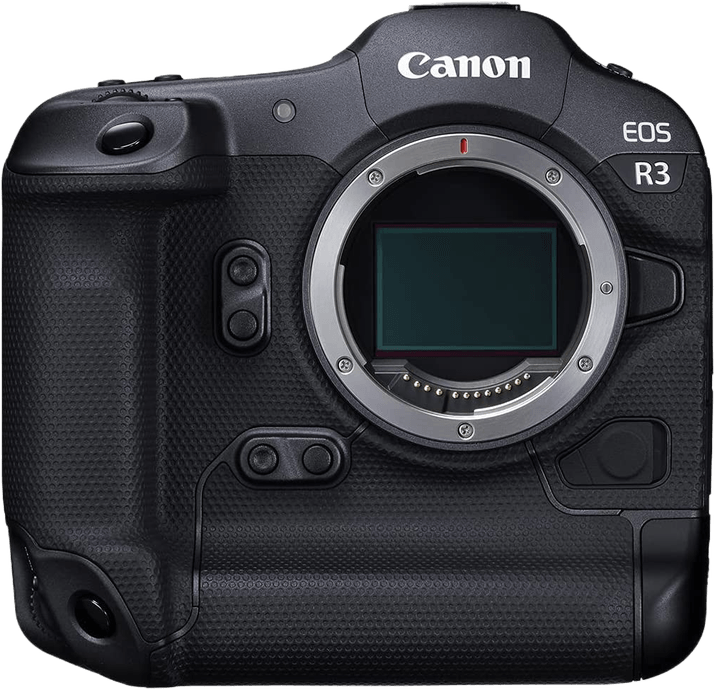
- A high frame rate of 30 fps
- Less noise with BSI stacked sensor
- 8 stops of image stabilization
- 6K / 60p RAW video
- 620-shot battery life
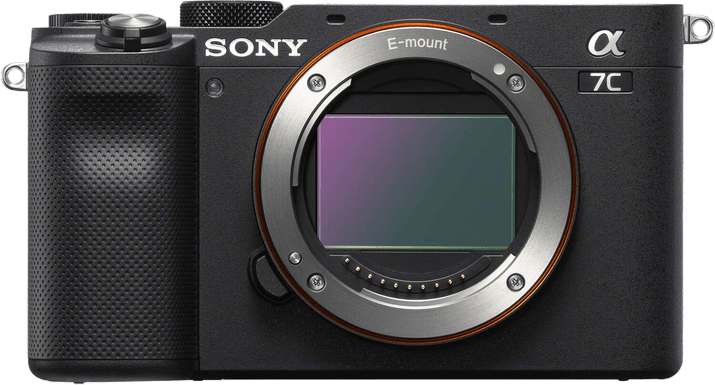
- Tiny, portable full frame body
- Excellent autofocus system
- Good battery life
- Weatherproof magnesium alloy body
- Option of bundling a lightweight 28-60 mm zoom lens kit
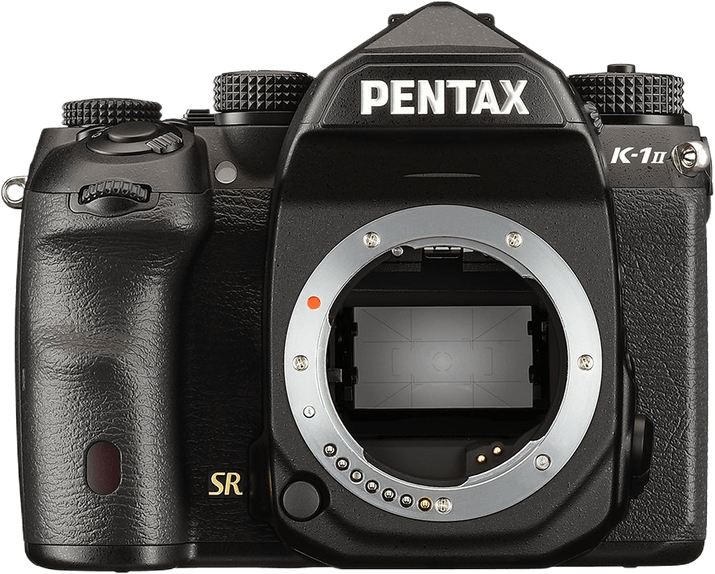
- Plenty of manual controls
- A wide ISO range for low light
- 5-axis Shake Reduction II worth 2.3 to 3.6 shutter stops
- Dynamic Pixel Shift resolution provides sharper images
- Astrotracer tracks stars at night
- Durable camera body with excellent weather sealing

- Fantastic 51-point AF system
- Strong low-light performance and dynamic range
- High-quality optical viewfinder
- Extra-capacity dual SD cards slots
- Robust, weather-sealed body
11 Best Cameras With High Dynamic Range in Detail
Now let’s look in more detail at each camera offering the best dynamic range.
1. Sony a7R V

| Camera Type |
Camera Type
|
| Megapixels |
Megapixels
61 MP |
| Sensor Format |
Sensor Format
|
| Sensor Size |
Sensor Size
35.7 x 23.8 mm
|
| Frame Rate |
Frame Rate
10 fps |
| Autofocus Points |
Autofocus Points
693 |
- High-resolution sensor
- Automatic bird or animal eye detection
- Autofocus can track cars, trains, airplanes, and insects
- Big, bright, clear, and sharp electronic viewfinder
- 3.2-inch tilt, flip LCD screen
- Slow frame rate of only 10 fps
- Focus stacking can't be done in-camera
- No in-camera RAW processing
- May be unbalanced with a big lens
- Rolling shutter effect with 8K video
The Sony a7R V is the latest in Sony’s range of high-end mirrorless cameras. It has the same image sensor as the previous version. But the new Bionz XR image processor brings 15 stops of dynamic range. This is the best on the market!
The extra speed also leads to several practical benefits. And It boasts an updated menu system and support for ultra-fast CFexpress Type A cards.
The autofocus (AF) system is probably the area that’s improved the most. It recognizes humans, animals, birds, insects, cars, trains, and aircraft. The processor can now use artificial intelligence (AI) to identify the subject using pose and form data.
You can also pick if the camera focuses on the eye, head, body, just the eye and head, or just eyes for humans, animals, or birds. All that makes Eye AF 60% more accurate, but you also get several customization options!
One nice touch is that there’s now a combined animal and bird option. As a Sony a1 user, I’ve often screwed up a shot after forgetting to change the focus mode, so I’m especially envious of that!
Another benefit is the boost to image stabilization. The new processor and improved algorithm mean you now get 8 stops rather than the 5.5 on the old a7R IV or the a1.
The electronic viewfinder (EVF) and rear LCD have also been replaced. The new EVF comes from the a1 and is bright and clear with 0.9x magnification and 944K dots of resolution. And the LCD is now much improved, with full articulation and a tilt-out cradle.
The video capabilities have also been improved. The a7R V can now shoot 8K / 24p (for 30 minutes) or 4K / 60p video. Both have a 1.24x crop, which sounds bad. But it’s just because the sensor has so many pixels. So it doesn’t need to use them all!
You also get full-width 4K up to 30p. Plus, there are different 10-bit 4:2:2 video options. This includes Hybrid Log Gamma (HLG), S-Cinetone, and S-Log3.
Rolling shutter is a problem with the 8K footage and oversampled APS-C 4K modes. But you can avoid that by using 4K / 60p, which is oversampled from an 8K region of the sensor. This oversampled 4K footage is something even the a1 can’t give you!
If you’re considering buying this camera, checking some of these comparisons first:
- Canon R5 vs Sony a7R V
- Canon R5 C vs Sony a7R V
- Sony a7 IV vs Sony a7R V
- Sony a7S III vs Sony a7R V
- Fujifilm X-T5 vs Sony a7R V
2. Hasselblad X1D II 50c

| Camera Type |
Camera Type
|
| Megapixels |
Megapixels
50 MP |
| Sensor Format |
Sensor Format
|
| Sensor Size |
Sensor Size
44 x 33 mm
|
| Frame Rate |
Frame Rate
2.7 fps |
| Autofocus Points |
Autofocus Points
117 |
- 50 MP sensor gives you outstanding image quality
- Excellent 14-stop dynamic range
- 1/2000 s flash sync
- Very compact for a medium format
- Built-in Wi-Fi and GPS
- Expensive even for a medium format
- Very low frame rate is not suited for action photography
- Limited range of lenses available
- Poor video recording with no 4K
Introduced in 2019, the Hasselblad X1D II 50c is a 51 MP medium format mirrorless camera with a 44 x 33 mm CMOS sensor. This is 70% larger than full frame versions, which means the pixels are 23.31 µm² (square micrometer). This is 63% bigger than they are on my a1! The extra light-gathering ability means 14.8 stops of dynamic range from 16-bit RAW files.
The X-mount is backward compatible with older Hasselblad HC and HCD lenses. There’s also a dedicated family of XCD lenses, but there are only 13 of them. Plus, the bokeh is often poor, and the lenses are expensive, like the camera itself!
This is a camera designed for studio or landscape photography. The lenses aren’t fast enough to use in low light, the battery life is poor, and the frame rate of 2.3 fps is awful for action sequences!
It also only offers Full HD video at 2720 x 1530. But the image quality is excellent, and the autofocus is precise (if slow) with optional touchpad AF.
The 3.6-inch fixed LCD screen is larger than you get on most DSLRs and mirrorless cameras. But the overall dimensions are similar, and it weighs less than the a1—which means much less than a DSLR. It also provides a few nice “extras,” such as GPS and Wi-Fi.
3. Nikon D850

| Camera Type |
Camera Type
|
| Megapixels |
Megapixels
45.7 MP |
| Sensor Format |
Sensor Format
|
| Sensor Size |
Sensor Size
23.9 x 35.9 mm
|
| Frame Rate |
Frame Rate
7 fps |
| Autofocus Points |
Autofocus Points
153 |
- Fantastic overall image quality
- Excellent 3D continuous AF tracking
- Long, 1,840-shot battery life
- Durable, weather-sealed construction
- Sharp 4K/30p Ultra HD video
- No customizable shooting presets
- Slow autofocus in Live View
- Needs an expensive XQD card
- Rolling shutter noticeable in 4K video
- Slow 7 fps or 9 fps with an expensive battery grip
Launched in 2017, the Nikon D850 was the last DSLR camera I owned. The 46 MP full frame CMOS back-illuminated sensor (BSI) provides 14.8 stops of dynamic range.
The BSI sensor also has good light-gathering capabilities. It offers consistent sharpness across the frame. But you need the automatic AF fine tune to get the best out of your lenses.
The low base ISO of 64 means excellent dynamic range and noise performance in good light. The lack of an anti-aliasing (AA) filter enables the D850 to capture finer detail (at the cost of possible moiré).
The sensor, AF system (from the D5), weather sealing, and battery life probably make it the best DSLR on the market. But it’s let down by its limited video features, slow autofocus in Live View, and glacial frame rate of 7 fps (or 9 fps with battery grip). This is despite the potential of the lightning-fast XQD card.
If you don’t mind these limitations, the D850’s a great all-around camera for almost any type of photography, from portraits to wildlife. The handling is good, but a fully articulated screen would’ve been nice. And the illuminated buttons are handy in low light.
The D850 offers 4K UHD video from the full sensor width up to 30p, plus 1080 video up to 120p (for slow motion). It gives 4:2:2 8-bit UHD uncompressed output while recording to a memory card. But you get rolling shutter in 4K, focus peaking isn’t available, and autofocus is slow. You can see our full Nikon D850 review here for the whole story, or our recent Nikon D780 vs D850 comparison.
4. Leica M11

| Camera Type |
Camera Type
|
| Megapixels |
Megapixels
60 MP |
| Sensor Format |
Sensor Format
|
| Sensor Size |
Sensor Size
24 x 36 mm
|
| Frame Rate |
Frame Rate
4.5 fps |
| Autofocus Points |
Autofocus Points
1 |
- High-resolution shooting options
- Low ISO setting of 64
- Three customizable buttons
- Good battery life
- Classic rangefinder camera body
- Eye-watering price tag
- Slow burst rate of 4.5 fps
- No in-body stabilization
- Small viewfinder
- No video features
Released in January 2022, the Leica M11 is a classic digital rangefinder camera. It has a 60 MP CMOS BSI sensor and offers 14.8 stops of dynamic range and a hefty knock to your bank balance!
You can choose from two cropped modes (39 MP / 1.3x and 18 MP / 1.8x) and three RAW options (18, 36, and 60 MP). These are all sampled from the whole sensor. That means they’re less likely to suffer from noise or moiré than images shot using subsampling or line-skipping.
It’s also the first M Series camera with matrix (multi-field) scene metering. But it’s a stills-only camera, so you can’t shoot any video.
Despite the retro styling, the M11 does offer a few concessions to modernity! These include the USB-C connection and three buttons customizable with a long press. The function button is on the top plate, and the function (Fn) button and the rear command dial are on the back.
The battery life is officially 700 shots, but Leica claims to be able to get 1,700 shots out of a single charge. That’s certainly consistent with my experience using the a1. All the CIPA figures are very conservative—especially if you shoot in burst mode.
The M11 is compatible with the Visoflex II 3.68M-dot tilting accessory EVF. And it’s available in two stylish variants:
- Black leatherette and silver with a brass top-plate
- Black and aluminum
5. Sony a7 IV

| Camera Type |
Camera Type
|
| Megapixels |
Megapixels
33 MP |
| Sensor Format |
Sensor Format
|
| Sensor Size |
Sensor Size
23.8 x 35.6 mm
|
| Frame Rate |
Frame Rate
10 fps |
| Autofocus Points |
Autofocus Points
759 |
- Excellent image quality
- Super responsive autofocus
- 5.5 stops of image stabilization
- Fully articulating rear screen
- Powerful video capabilities (4K / 60p, 10-bit video) and live streaming
- More expensive than the Sony a7 III
- 6 fps with 14-bit lossless compressed or uncompressed RAW files
- Significant distortion with moving subjects using a silent shutter
- Occasional issues with rolling shutter
- Requires a fast memory card
Introduced in 2021, the Sony a7 IV is a mirrorless camera. It has a 33 MP BSI CMOS full frame sensor that provides 14.7 stops of dynamic range.
Like the a1, it provides 5.5 stops of image stabilization and twin card slots supporting CFexpress Type A and UHS-II SD cards. But the continuous shooting speed is limited to 10 fps (or 6 fps with full dynamic-range RAW files), and you only get 4K video.
Image quality is good when shooting both stills and video. And Sony’s autofocus system is typically quick and easy to use. You also get several customization options and USB power delivery support for charging or operation.
The video feature set is also impressive (apart from the lack of waveforms). It offers full-width oversampled 4K (from 7K capture) up to 30p, 4K / 60p (from 4.6K) in Super35 / APS-C mode. You can also get 10-bit video, HEIF stills capture, H.265 video, and S-Cinetone color mode.
But eye detection is inaccurate, the rear LCD has a low resolution, and the menu is needlessly complicated for some settings. As with all Sony cameras, there’s also no in-camera RAW processing option.
6. Nikon Z7 II

| Camera Type |
Camera Type
|
| Megapixels |
Megapixels
45.75 MP |
| Sensor Format |
Sensor Format
|
| Sensor Size |
Sensor Size
23.9 x 35.9 mm
|
| Frame Rate |
Frame Rate
10 fps |
| Autofocus Points |
Autofocus Points
439 |
- High-resolution image sensor
- Rapid 1/8000 s shutter speed
- Excellent AF system
- Dual memory card slots
- Great 4K video at 60 fps
- Disappointing battery life of 420 shots
- Tilt screen has limited flexibility
- Limited lens range
- Slow frame rate of 10 fps in continuous shooting speed
Brought out in 2020, the Nikon Z7 II took over from the original Z7 and is capable of 14.7 stops of dynamic range—partly due to the low native ISO of 64. You can check our Nikon Z7 vs Z7 II comparison for full details.
It has a 46 MP full frame CMOS BSI sensor and offers in-camera five-axis stabilization and 4K video. The extra Expeed 6 processor bumps the maximum frame rate to 10 fps, improves the autofocus, and helps the camera shoot 4K / 60p video (with a slight crop).
The CFExpress/XQD card slot accommodates the higher frame rate. And you can extend the battery life by buying the vertical control grip.
Due to its higher megapixel count, the Z7 II beats the Z6 II on sharpness and detail. The handling is good. But, again, a fully articulated LCD would’ve been nice for selfies and vlogging.
AF tracking and eye detection are separate, the tracking is less reliable, and eye detection is less accurate than other models. There’s only one card slot for the faster cards. And the viewfinder isn’t a match for the Sony a1.
Because of the higher pixel count, the Z7 II has to rely on line-skipping when shooting video (especially with 4K / 60p). That means the footage is less detailed with more noise and a higher risk of moiré in low light.
If you drop down to the APS-C crop mode (Super35 / DX format), you get more detail from the pixels in a 5.5K sensor region. But that comes at the expense of more noise, and you need an even wider-angle lens.
Depending on your external recorder, you can also pay to upgrade the camera to allow RAW video output, either ProRes RAW or Blackmagic RAW. The latest firmware adds the flexibility to edit settings such as white balance.
7. Pentax 645Z

| Camera Type |
Camera Type
|
| Megapixels |
Megapixels
51.4 MP |
| Sensor Format |
Sensor Format
|
| Sensor Size |
Sensor Size
32.8 x 43.8 mm
|
| Frame Rate |
Frame Rate
3 fps |
| Autofocus Points |
Autofocus Points
27 |
- Affordable for a medium format
- Incredible 51.4 MP sensor resolution
- Autofocus works well in low-light
- Excellent low-light performance with high ISO settings
- Durable weather-sealed body
- Autofocus (AF) can be slow
- AF points are only found around the center of the frame
- Slow burst mode
- Bulky and heavy body
- Lacks decent video features
Launched in 2014, the Pentax 645Z is a medium format camera with a 51 MP CMOS sensor that offers 14.7 stops of dynamic range.
The lack of an optical low-pass (AA) filter means you get phenomenal detail. The quality of the images remains good at high ISOs, and the top ISO is a massive 204,800.
The AF system is rapid and works well in low light, but the focus points are too central. The viewfinder is large and bright. You also get a tilting 3.2-inch rear screen, a top LCD, weather sealing, and good battery life.
It’s a big improvement on the previous version, the Pentax 645D. But the frame rate is still too low for sports or wildlife. And it’s far too bulky and heavy for travel photography.
It also lacks 4K video, with the best available resolution being Full HD (1920 x 1080). You also get significant moiré and false color in videos, especially at 60p. And shake reduction adds distortion and a shimmering effect.
8. Canon EOS R3

| Camera Type |
Camera Type
|
| Megapixels |
Megapixels
24 MP |
| Sensor Format |
Sensor Format
|
| Sensor Size |
Sensor Size
24 x 36 mm
|
| Frame Rate |
Frame Rate
30 fps |
| Autofocus Points |
Autofocus Points
1,053 |
- A high frame rate of 30 fps
- Less noise with BSI stacked sensor
- 8 stops of image stabilization
- 6K / 60p RAW video
- 620-shot battery life
- Relatively expensive
- Low-resolution for some photographers
- No 8K video
- Slowed frame rate with an SD card or low battery
Brought out in 2021, the Canon EOS R3 is one of the top mirrorless cameras today. And it offers 14.7 stops of dynamic range.
The relatively low number of pixels on the 24 MP full frame stacked CMOS sensor means each pixel is much larger (36 µm²). That explains the excellent performance in low light. But it reduces the resolution and your ability to crop in.
Without the long-awaited R1, the R3 is the closest Canon has yet come to a flagship mirrorless camera. And the features are outstanding.
Dual Pixel AF is rated down to -7.5 EV (with an f/1.2 lens). And Eye Control AF lets you move the focus point by simply looking at the subject—magical!
The highest frame rate is 30 fps (14-bit RAW) using the electronic shutter with CFexpress Type B card support. You get a very fast shutter speed of 1/64000 s, blackout-free shooting, and even an optical viewfinder (OVF) simulation mode (like a DSLR).
Canon also throws in a few of its standard “goodies.” This includes sensor-shift image stabilization and built-in Wi-Fi and GPS.
Like a lot of Canon bodies, the R3 provides good video performance. You can shoot 6K footage and DCI or Ultra HD (UHD) 4K video up to 120p (oversampled up to 60p).
There’s also the option of RAW video or 10-bit C-Log3 video capture. But the R3 sometimes has a problem with overheating, especially when shooting in 6K.
9. Sony a7c

| Camera Type |
Camera Type
|
| Megapixels |
Megapixels
24.2 MP |
| Sensor Format |
Sensor Format
|
| Sensor Size |
Sensor Size
23.8 x 35.6 mm
|
| Frame Rate |
Frame Rate
10 fps |
| Autofocus Points |
Autofocus Points
693 |
- Tiny, portable full frame body
- Excellent autofocus system
- Good battery life
- Weatherproof magnesium alloy body
- Option of bundling a lightweight 28-60 mm zoom lens kit
- Only two customizable buttons
- Small electronic viewfinder
- No touchscreen menus
- Only has one memory card slot
Launched in 2020, the Sony a7c is an affordable, compact, full frame mirrorless camera. And it has a 24 MP BSI-CMOS sensor that offers 14.7 stops of dynamic range.
The a7c is Sony’s smallest full frame interchangeable-lens camera, weighing just over a pound. You get five-axis sensor-shift image stabilization and a decent frame rate of 10 fps. And It has a three-inch fully articulated screen, Wi-Fi, and weather sealing.
Sharpness and detail are excellent. The autofocus system offers the usual bells and whistles with a Sony camera. These include real-time tracking with human head, face, eye, and animal recognition.
You can shoot oversampled 4K video up to 30p, including 8-bit S-Log and HLG. Plus, there are both headphone and microphone sockets.
But video AF demands a change in the settings to activate tracking, and most settings persist across stills and video. That means you have to change a lot of them when switching.
Also, the viewfinder resolution and magnification are low. Plus, the “early” Sony menus are complicated. Finally, not everyone will like the rangefinder-style viewing experience or the lack of an eye cup.
10. Pentax K-1 Mark II

| Camera Type |
Camera Type
|
| Megapixels |
Megapixels
36 MP |
| Sensor Format |
Sensor Format
|
| Sensor Size |
Sensor Size
35.9 x 24 mm
|
| Frame Rate |
Frame Rate
4.4 fps |
| Autofocus Points |
Autofocus Points
33 |
- Plenty of manual controls
- A wide ISO range for low light
- 5-axis Shake Reduction II worth 2.3 to 3.6 shutter stops
- Dynamic Pixel Shift resolution provides sharper images
- Astrotracer tracks stars at night
- Durable camera body with excellent weather sealing
- AF is not as refined as others
- A slow frame rate
- Noise reduction always applied leads to soft images
- Limited modern lens selection
- Soft Full HD and no 4K capture
- A short battery life
Introduced in 2018, the Pentax K-1 Mark II is a full frame DSLR. It has a 36 MP CMOS image sensor (with no AA filter) that provides 14.6 stops of dynamic range.
It doesn’t have the most impressive specs. But it does have a few features to suit landscape, travel, or adventure photographers. These include the electromagnetic compass, Operation Assist Lights, Astrotracer, and GPS.
The camera supports 14-bit RAW recording in DNG (standard Adobe) or PEF format (Pentax’s RAW format). And the images show excellent detail at low ISOs.
It offers five stops of image stabilization, a new handheld pixel shift mode, Wi-Fi, and extensive weather sealing. You also get a 33-point AF system, including 25 cross-type sensors and an updated tracking algorithm. But there’s no eye detection.
On the downside, video recording is limited to 1080 / 30p video. There’s no focus peaking. And noise reduction can’t be turned off, which leads to a loss of detail.
Continuous AF and tracking are also unreliable. The AF points are hard to see in the dark and offer a limited coverage area. And its maximum frame rate is also low, even for a DSLR.
There’s also no touchscreen, there aren’t many compatible lenses, and the whole camera feels pretty heavy. But you do get headphone and mic jacks.
11. Nikon D7200

| Camera Type |
Camera Type
|
| Megapixels |
Megapixels
24.2 MP |
| Sensor Format |
Sensor Format
|
| Sensor Size |
Sensor Size
15.6 x 23.5 mm
|
| Frame Rate |
Frame Rate
6 fps |
| Autofocus Points |
Autofocus Points
51 |
- Fantastic 51-point AF system
- Strong low-light performance and dynamic range
- High-quality optical viewfinder
- Extra-capacity dual SD cards slots
- Robust, weather-sealed body
- Very slow 6 fps max burst speed
- Highest expandable ISO settings are only available in black and white
- LCD screen is not fully articulating
- No 4K video and limited video features
The Nikon D7200 came out in 2015. It’s a DSLR camera with a 24 MP DX (APS-C) CMOS sensor that offers 14.6 stops of dynamic range. The quality of the images is good for an APS-C body, and low-light performance is exceptional.
Improvements over the D7100 include a larger buffer and improved low-light AF performance. It also has 60p video, Wi-Fi with NFC, and 15% better battery life. You can check the full Nikon D7100 vs D7200 comparison for yourself for more details.
The Multi-CAM 3500DX II AF system has 51 focus points, all sensitive to -3 EV. A 2,016-pixel RGB metering sensor is also used for impressive 3D subject tracking. The weather sealing, maximum shutter speed, and ISO range are all adequate, and it’s easy to use.
Video is limited to 1080 / 60p with a 1.3x crop. But you get clean output over HDMI and Flat Picture Control to make color grading easier. But the autofocus is rather fast and “jumpy.”
There are one or two problems with the D7200. In Live View:
- You can’t control the aperture
- There’s no histogram
Plus, the maximum continuous shooting speed is only 6 fps. And even that only lets you take 12-bit RAW images, which reduces the dynamic range. And the camera body is also rather bulky.
Our Verdict
If you need a camera with the best dynamic range for low-light conditions or backlit shots, our list is a good starting point when choosing a new camera.
Top of the charts is the new a7R V. But if you don’t fancy a mirrorless camera, you also have DSLR options, both in full frame and crop format.

Sony a7R V
Common FAQs
These are the questions we get asked most about cameras with high dynamic ranges.
What is a High Dynamic Range?
High Dynamic Range (HDR) is the difference between the brightest and darkest values your camera can capture. It’s usually measured in “stops” of light or Exposure Values (EVs). Each stop is simply a doubling or halving of the light level.
Is HDR Better Than 4K?
No. High dynamic range and 4K try to improve picture quality to provide a more realistic viewing experience. But they do so differently. An HDR image improves color and contrast, while 4K delivers a sharper, more detailed image.
Fortunately, the technologies are compatible. So modern 4K and 8K TVs often let you enjoy the quality of high dynamic range with the sharpness of Ultra (UHD).
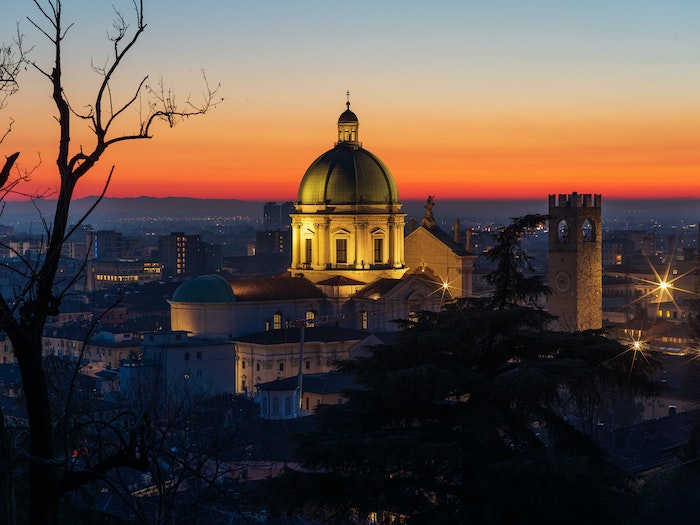
What is High Dynamic Range Used For?
It helps to capture as much detail as possible in the image to mimic what we see ourselves. A camera’s dynamic range is never as good as the human eye’s. So manufacturers are constantly trying to catch up.
Which Camera Has the Highest Dynamic Range?
The Sony a7R V is the current champion. But we only have Sony’s word for it! DXOMARK hasn’t had a chance to do comparative tests yet, so we shall see…
What Camera Has 15 stops of Dynamic Range?
The Sony a7R V is the only camera with 15 stops of dynamic range—so far!
What is the Dynamic Range of a Film Camera?
It depends on the camera, but 35 mm film has a dynamic range of 12 to 15 stops. In general, that’s a bit better than most digital cameras. But the latest models are catching up fast.
If you’re still unsure which camera to buy, check out our camera comparison tool for inspiration! We have great recent articles on the best camera brand, best camera for nature photography or jewellery photography too.




